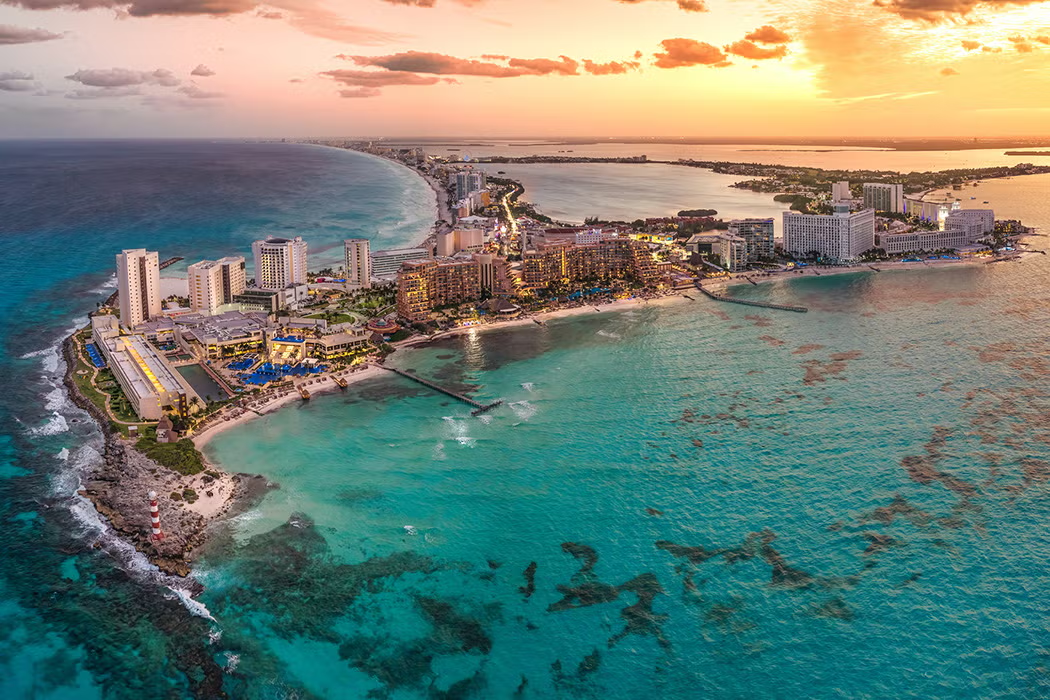Months Without Sargassum in Cancun: Book on time!

Cancun is one of the most sought-after destinations in the world. However, in recent years, the arrival of sargassum—a type of seaweed—has posed challenges for both tourists and locals. Sargassum is a natural phenomenon. But its excessive presence has impacted the beauty of Cancun’s coastline. The good news? There are months when sargassum is less likely to appear. Thus offering travelers the perfect opportunity to enjoy Cancun’s beaches at their best. Here are some tips on the Months Without Sargassum in Cancun.
What is Sargassum?
Sargassum is a brown seaweed that floats in large masses across the ocean. It originates in the Sargasso Sea, a region in the Atlantic Ocean, and is carried by ocean currents to the Caribbean, including Cancun. While sargassum plays a vital role in marine ecosystems by providing habitat for fish and other sea creatures, its overabundance on beaches can create challenges. When it washes ashore, it decomposes, releasing an unpleasant odor and turning the clear waters brown. This has made it a growing concern for coastal destinations like Cancun.
Months Without Sargassum in Cancun. How it has Impacted Tourism
Cancun’s economy heavily relies on tourism, and its stunning beaches are a major draw for visitors. The arrival of sargassum has, at times, disrupted the postcard-perfect image of the region. Travelers expecting crystal-clear waters and white sandy beaches have occasionally been met with piles of seaweed instead. This has led to complaints, canceled bookings, and even negative publicity for the area. Local authorities and hotels have invested heavily in cleanup efforts, but the unpredictable nature of sargassum makes it a persistent challenge.
Why Sargassum is More Prominent in Certain Months
Sargassum blooms are influenced by factors like ocean temperatures, currents, and nutrient levels. Warmer waters and increased nutrient runoff from agriculture and other human activities have contributed to larger blooms in recent years. In Cancun, sargassum is most prevalent between April and October, peaking during the summer months. This period coincides with the region’s rainy season, which can exacerbate the problem by washing more seaweed ashore.
Months Without Sargassum in Cancun
If you’re planning a trip to Cancun and want to avoid sargassum, the best time to visit is during the winter and early spring months. From November to March, sargassum levels are typically lower, and the beaches are more likely to be clear. These months also offer pleasant weather, with cooler temperatures and less humidity, making them ideal for outdoor activities and beach relaxation. While no season is entirely sargassum-free, the chances of encountering it during this period are significantly reduced.
What’s Being Done to Combat Sargassum in Cancun?
Local authorities, hotels, and environmental organizations are working together to address the sargassum issue. Efforts include installing offshore barriers to prevent seaweed from reaching the shore, deploying cleanup crews to remove sargassum from beaches, and researching sustainable ways to repurpose the seaweed. While these measures have helped mitigate the problem, travelers are still encouraged to plan their visits during low-sargassum months for the best experience.
Sargassum may be a natural part of the ecosystem, but its impact on Cancun’s beaches has been undeniable. By understanding what sargassum is and when it’s most likely to appear, travelers can plan their trips to enjoy Cancun’s beauty without the inconvenience of excessive seaweed. For the clearest waters and most pristine beaches, consider visiting between November and March. With its stunning scenery, vibrant culture, and warm hospitality, Cancun remains a dream destination—sargassum or not!
